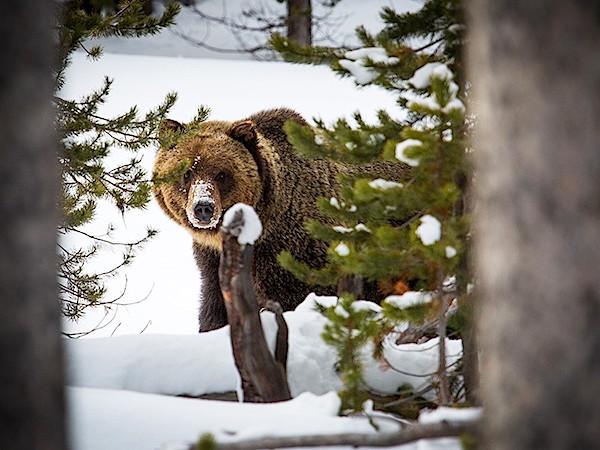
U.S. Fish and Wildlife Service officials are being asked to perform a more accurate tally of grizzly bears in the Greater Yellowstone Ecosystem/NPS, Neal Herbert
Population tallies of grizzly bears in the Greater Yellowstone Ecosystem are far from being reliable and could be low by as much as 40 percent, according to a wildlife advocacy group in Wyoming.
Kent Nelson, executive director of Wyoming Wildlife Advocates, pointed that out in a letter to U.S. Fish and Wildlife Service Director Daniel Ashe that beseeched the Service to develop a more definitive approach to estimating the species' population in the ecosystem.
"This past week I attended the Yellowstone Ecosystem Subcommittee of the Interagency Grizzly Bear Committee. At the meeting it became clear that nobody, and I do mean nobody, has a clear idea of how many grizzly bears there are in the Greater Yellowstone Ecosystem," Mr. Nelson said in a letter (attached below) dated Nov. 10.
While the Interagency Grizzly Bear Study Team recently announced that there were 714 grizzlies in the ecosystem, a drop from 757 in 2014, officials acknowledged that the counting system they use contains a margin of error that could swing the population 155 bears up or down from that 714, he wrote. But the tally could be far less accurate, he added.
"IGBST says that (the count methodology program) Chao2 is biased low and becomes less accurate over time. This week, team leader Frank Van Manen said that he believes that 'we are underestimating by about 40 percent,'" the letter went on. "So are there 638 or 714 or 793 or 1,110 (793 + 40 percent) grizzlies? No one knows with any certainty and now we have a spread of 472 bears."
Without a truly accurate count, wrote Mr. Nelson, "the intentions of the (Endangered Species Act) are subverted."
To remedy the problem, the wildlife advocate urged Director Ashe to order that future counts be based on DNA hair analysis.
"IGBST's parent agency, the USGS, is familiar with this methodology. They have done this type of work in Montana and they helped Alberta set up its DNA grizzly monitoring program, which many believe represents the best available science," Mr. Nelson wrote. "Funny that we advised Alberta on using this technique, but don't use it ourselves in the GYE. And remarkable that Alberta found they had 2.5 times the number of bears than they had previously estimated, with a confidence factor that actually inspired confidence, not derision."




 Support Essential Coverage of Essential Places
Support Essential Coverage of Essential Places







Comments
Finally!! Every conservation group should write letter insistin that a DNA population study on Yellowstone grizzlies is a prerequisite for delisting. There have actually been 2 DNA studes in Montana. One for the Northern Continental Divide Ecosystem, and one for the Cabinet-Yaak.